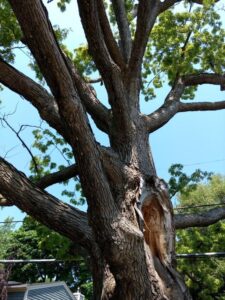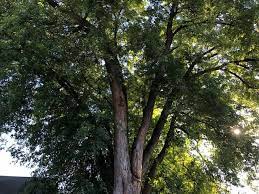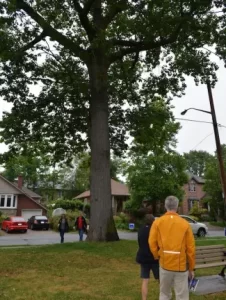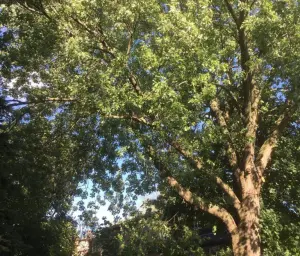South Etobicoke has some of the oldest trees in the City but more than half require maintenance to keep them alive and healthy, according to a report.
A City Tree Maintenance Review Update has found that more than half of our trees need general maintenance and less than one per cent needs immediate work.
The review that was conducted last year said 109,607 inspection of trees in park and streets found about 60 per cent of City trees needed maintenance and almost 40 per cent did not require any work.
The review was prepared by the City’s Parks, Forestry and Recreation (PFR) staff for the Infrastructure and Environment Committee for information purposes.
Toronto’s canopy cover and total tree population has increased over the last 10 years, from 26.6% to 28.4% between 2008 and 2018. The City’s tree population increased from 10.2 million to 11.5 million trees.
It said the PFR is the steward of Toronto’s urban forest of 11.5 million trees, of which 6.1 million are on private property, 3.5 million growing in parks and ravines and 640,000 on public streets and trails.
The City has long recognized the importance of trees and urban forests and the benefits they provide. In 2021, City Council reaffirmed Toronto’s canopy cover target of 40 per cent by 2050 to align with the City’s Net Zero Strategy.
The intent of the City’s tree by-laws are to regulate tree injury and removal, protecting trees from unnecessary harm, while promoting maximum tree protection and compensation, including replacement planting.
A City report stated that from May 2022 to the end of 2023, a total of 3,858 tree removal permit applications were considered by PFR, of which 3,335 removal permits were granted by staff, 114 tree permit application were denied, and 409 applications withdrawn by the applicant.
Of the 114 tree permit applications denied by City staff, 60 were appealed by the permit applicant to Community Council.
In Etobicoke York alone some 14 tree removals were appealed; six adopted staff recommendations and eight had their applications amended.
The City says it wants to increase its tree canopy — the amount of city streets shaded by trees — to cover 40 per cent of Toronto by 2050. As of a 2018 city review, the canopy covered about 30 per cent.
Trees are described as a natural air conditioner. A healthy tree canopy is the only way of cooling entire neighbourhoods, according to City officials. Trees filter out air pollution, and in other areas, reduce flash floods and landslides.
Trees are important in urban areas because crowding, impervious surfaces, and development produce lots of heat. Canopy can also help us reduce our carbon footprints and save on our electric bills.



